
No, it isn't the secret lair of the Amazons, nor a property of Hugh Hefner, although you might be forgiven thinking that when you see a representation of one of them.
First, a word of caution. A photo in an earlier story caused a reader to ask to be removed from my email list.
If this story similarly offends you, then DON'T click on THIS link!
The statue is of Ixchel, the Mayan Moon Goddess, as well as goddess of many other important phenomena, as the plaque explains: the rainbow, water, fertility, abundance, love, and medicine. Her unusual headdress is "an entwined serpent."
When the Spanish arrived, they found many stone statues of women carved in honor of the goddess. It is from this tale that the island gets its name – Isla Mujeres, or Island of Women.
The island itself is located eight miles offshore, and some say, 20 years in the past, from Cancun.

According to a tourist brochure: "A secluded, laid-back retreat, Isla Mujeres seems worlds away from modern, high-energy Cancun, visible across a narrow channel. Just 5 miles long and 1/2 mile wide, with a downtown area of only four by six blocks, it's known as the best value in the Caribbean, assuming that you favor an easy-going vacation pace and prefer simplicity to a lot of action. This is an island of white-sand beaches and turquoise waters, complemented by a town filled with Caribbean-colored clapboard houses and rustic, open-air restaurants, fun bars, and artisan shops."
It is accessible by regular service from the mainland: 45 minutes by conventional ferry or 15 minutes by hydrofoil.
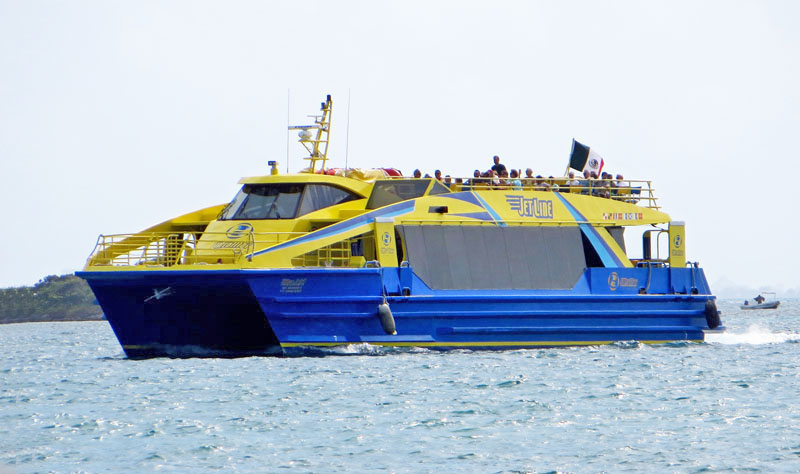
Of course, Peep & Flo are always eager to experience new modes of travel.
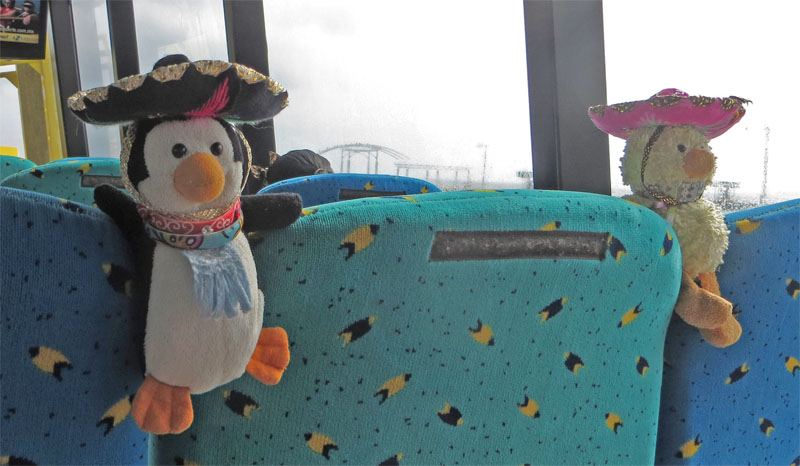
Including, once on the island, rental golf carts. Realizing the only photos I had of ours were closeups to document existing damage before we departed,
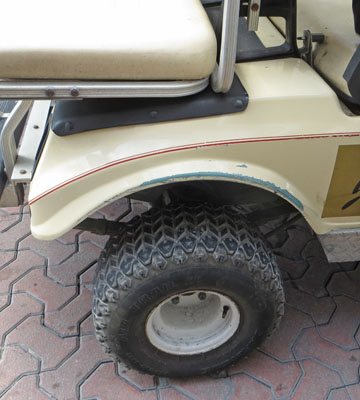
I was fortunate to find this example on the Internet. 
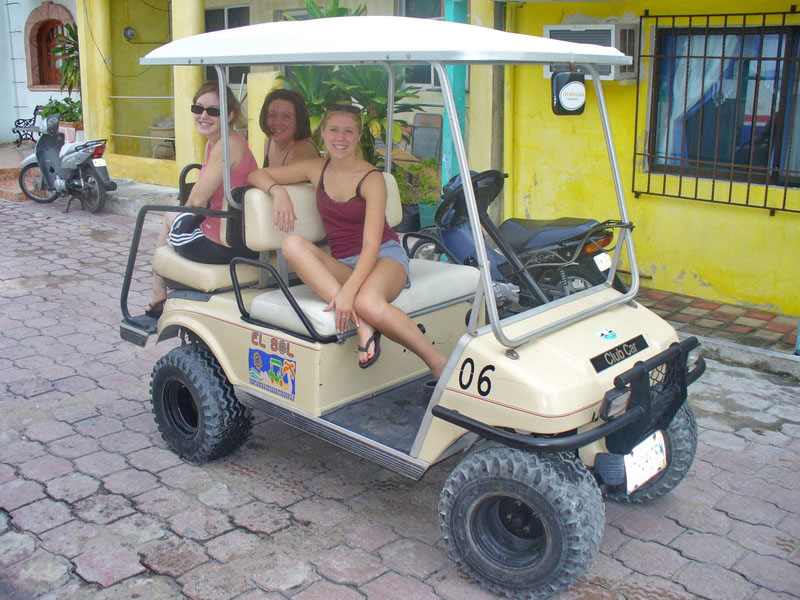
After wending our way out of town – fortunately there was a reverse gear, since not all the one-way streets were signed at each intersection – we cruised down the eastern, Caribbean, side with its strong surf and rocky coast.
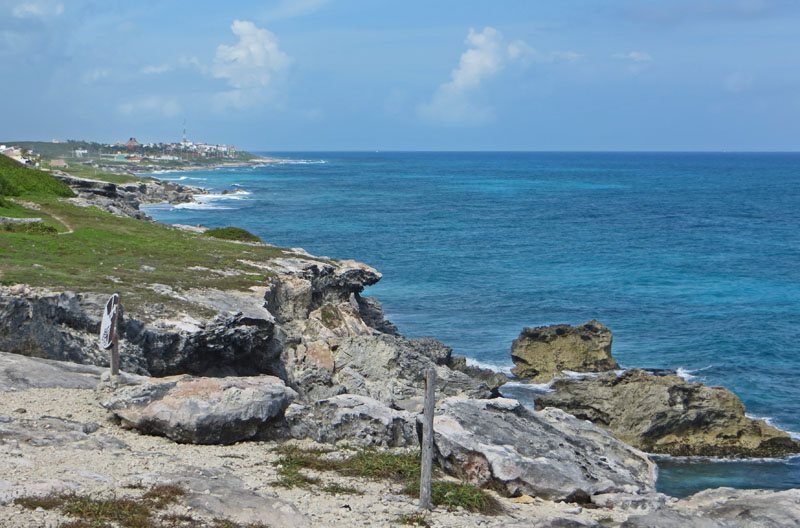
Elegant homes are situated to take advantage of the panoramas.
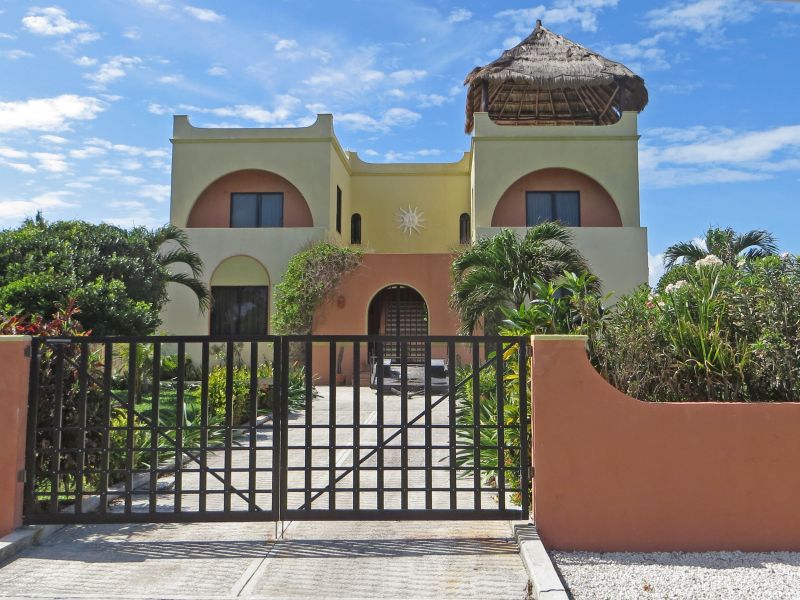
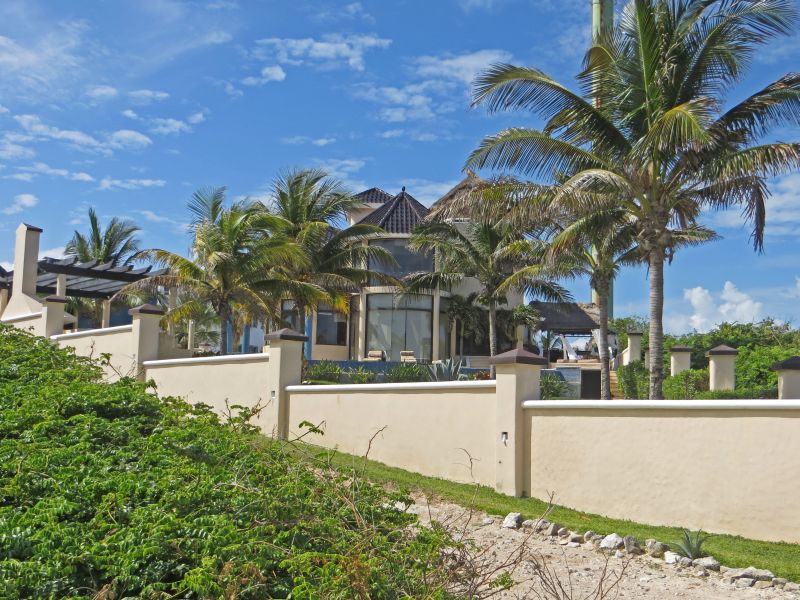
Ixchel's modern likeness is located on the southern end of the island, Punta Sur. We were nearly there when the engine sputtered and died. Oh no, were we out of gas? These "golf carts" are gasoline powered, not the battery type actually used on golf courses. The spartan dashboard provided no clue, but the earlier evidence of their level of maintenance didn't provide a high level of confidence that we had started with an adequate fill.
We hadn't passed any gas stations along the way, but I realized that in any case access to the gas tank, as well the engine, seemed to be under the seat, which was hinged on one end and secured with a large padlock on the other.
Although I previously mentioned that the island was "only" 5 miles long, the day was warm and humid and it has been a long time since those Boy Scout hikes. Fortunately, after a few minutes we were able to restart the engine and continue on to Punta Sur.
In the far distance is the remains of a temple to Ixchel and nearer, a sculpture garden. Punta Sur also has the distinction, at 20 meters above sea level, of being "the highest point in the Yucatan" and also "where the rising sun first touches Mexican soil!"
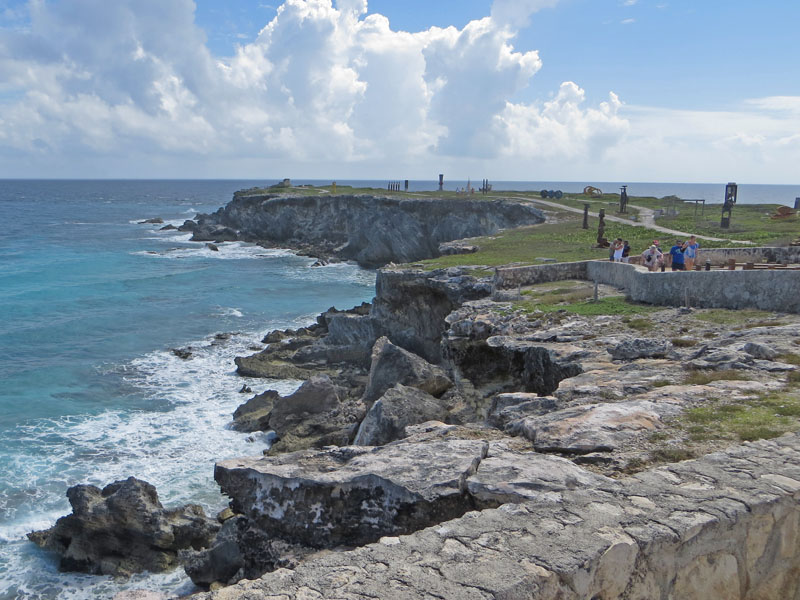
Nearer is a restaurant that we were about to investigate when a truckload of heavily armed men in black, including ski masks, pulled up and unloaded. I considered it a propitious time to temporarily pocket my camera and check out the nearby topiaries
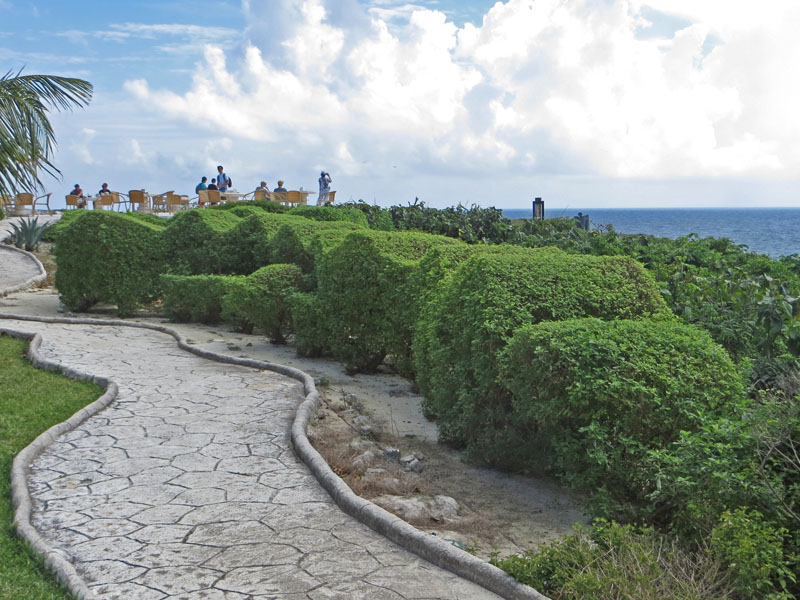
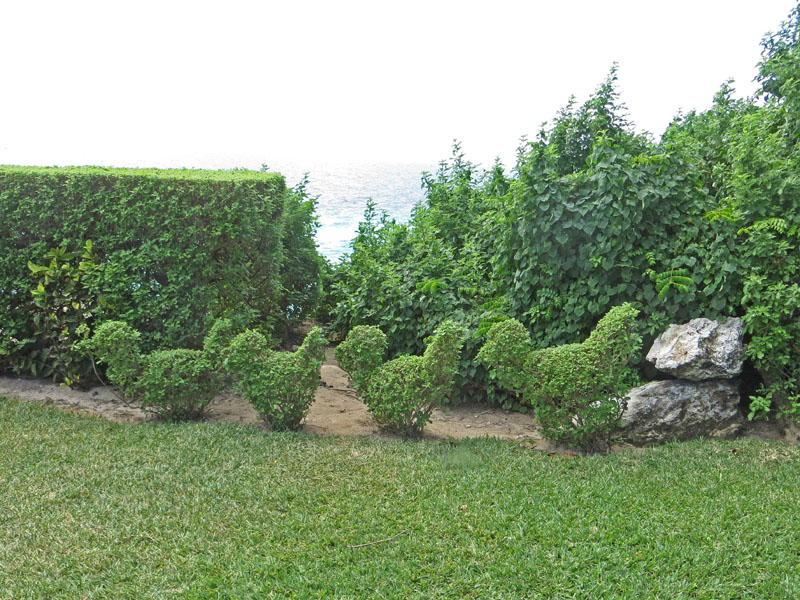
and sculptures
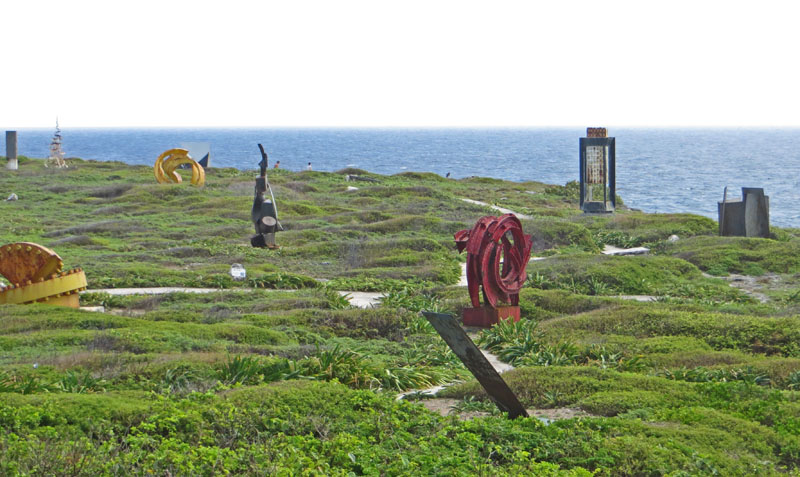
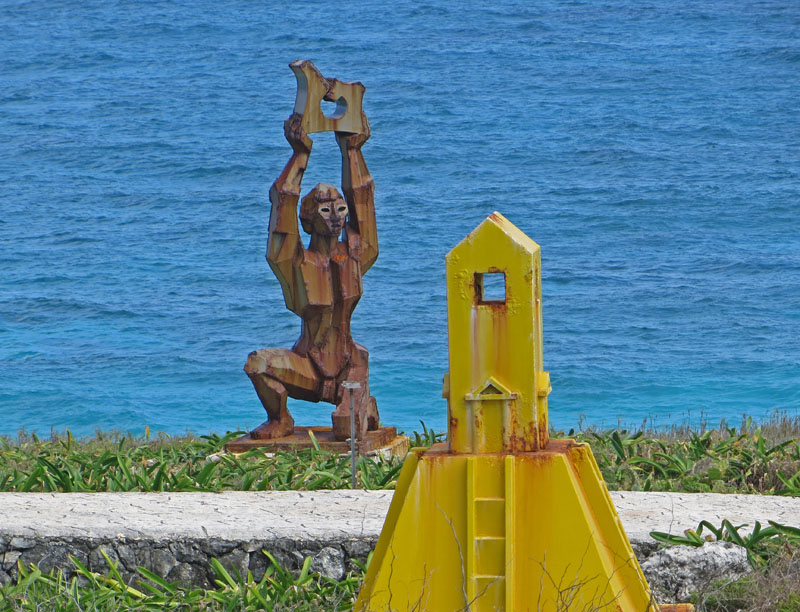
created by noted artists who were said to "use modern shapes and bright hues to interpret the legendary spirit of the Mayan civilization."
It appears the intruders were Federales, because we didn't detect any unusual commotion. We don't know the reason for their sudden appearance, but we did notice restaurant staff hurriedly packing up a table displaying specialty drinks and bottles of alcohol from the entryway.
In any case, they soon departed, and we followed their example.
Unfortunately, on the western, leeward, side homes and other buildings block the sea view towards Cancun.
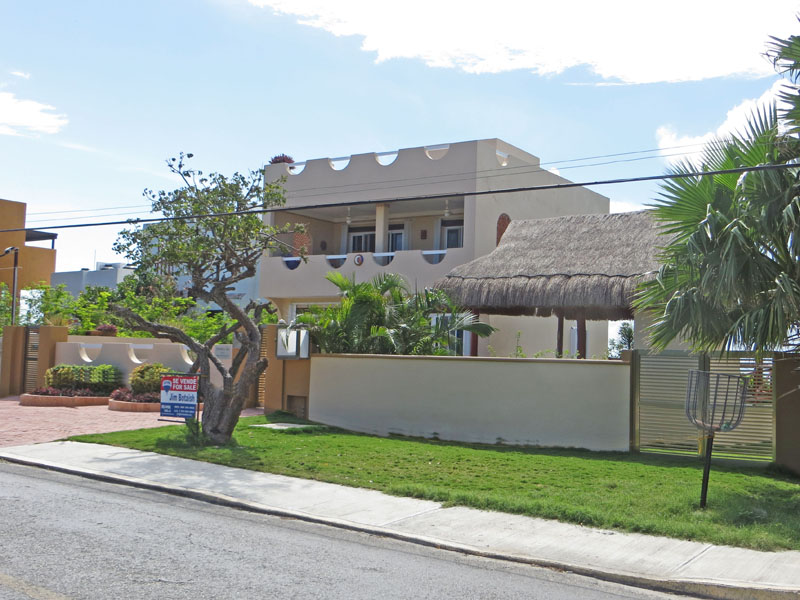
We spotted another reminder that this is not Cancun.
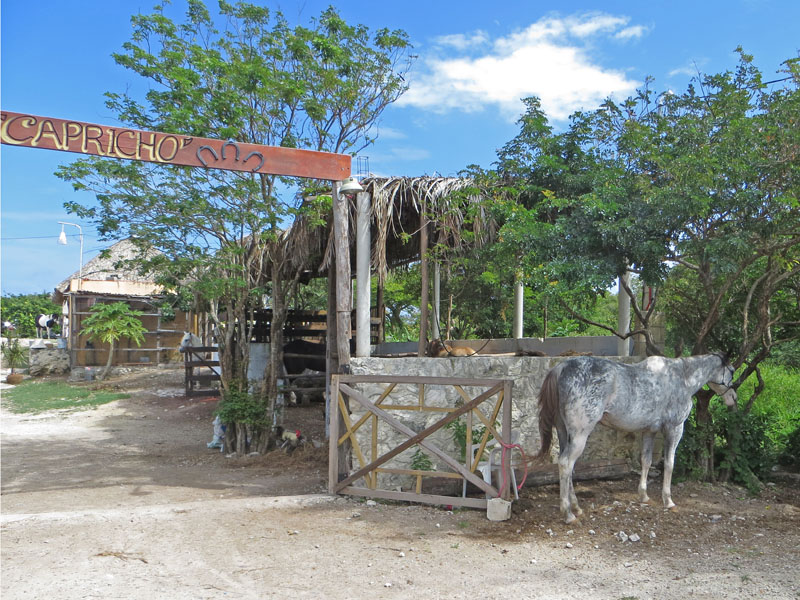
Once again, the engine sputtered, but not being caught unawares this time I pumped the accelerator several times and it smoothed out.
Arriving back at the populated north end, we stopped to consult Frommer for restaurant recommendations, when a woman exited the adjacent small hotel and asked if she could help. Coincidentally, she was a retired Bethesda Spanish teacher now living in Denver. They come frequently, although not normally this time of year. However, a heavily-discounted airfare proved too attractive to resist.
She recommended two restaurants, one behind a gas station! However, our choice was determined by a rare parking place directly in front of the other, Cockteleria Picus.

It is clear that they have little concern about cold weather.
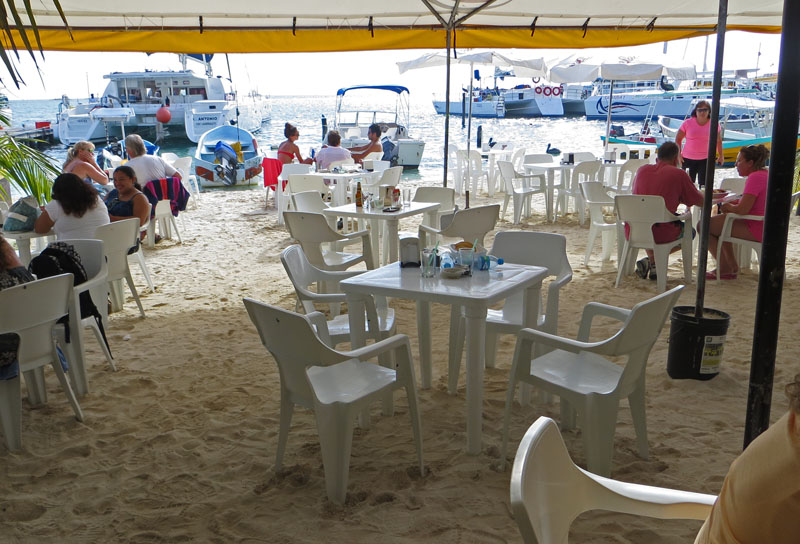
However, the seating has its own hazards – a diner at a nearby table leaned back a little too far and flipped over backwards onto the sand. Seeing he was unhurt, we applauded his acrobatics and he struck up a conversation. He was no newcomer – along with a buddy, he had often spent his vacation, after buying an RV in Minnesota, driving it to Cancun. At the end of their stay, they sold it for enough to pay for their trip.
His recent transportation mode has been compliments of his girlfriend, a Delta flight attendant.
Indications were that fish would be a good choice.
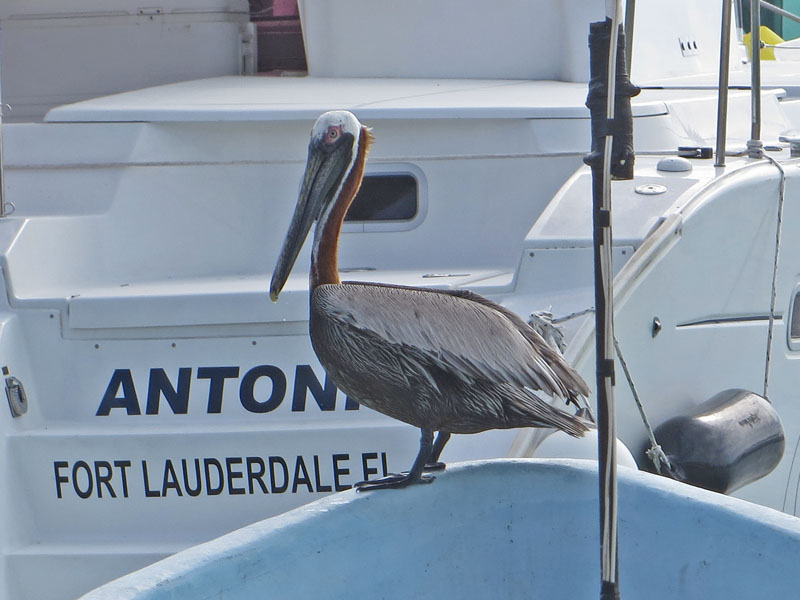
And indeed it was.
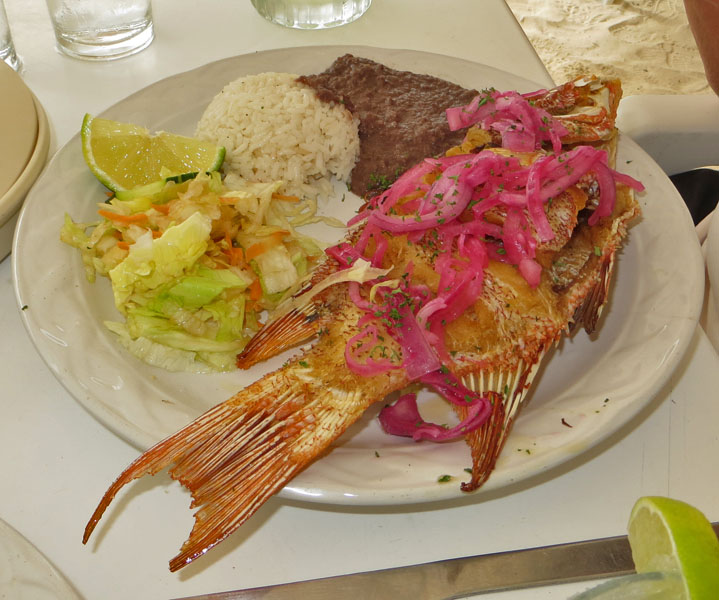
Betty Lou says that when she finishes an entrée that has bones, it can be displayed in the Smithsonian.
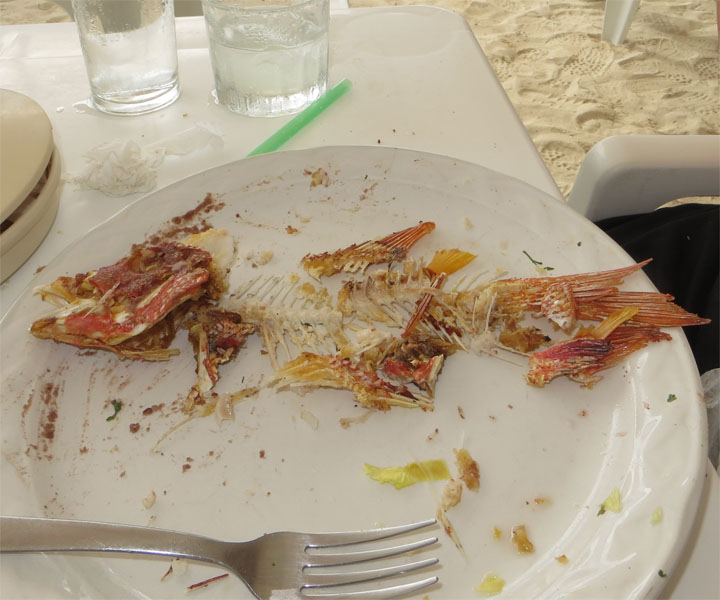
Another recommendation was to watch the sun set from atop a nearby rooftop bar. However, on this visit I'll have to substitute one from Cancun.
